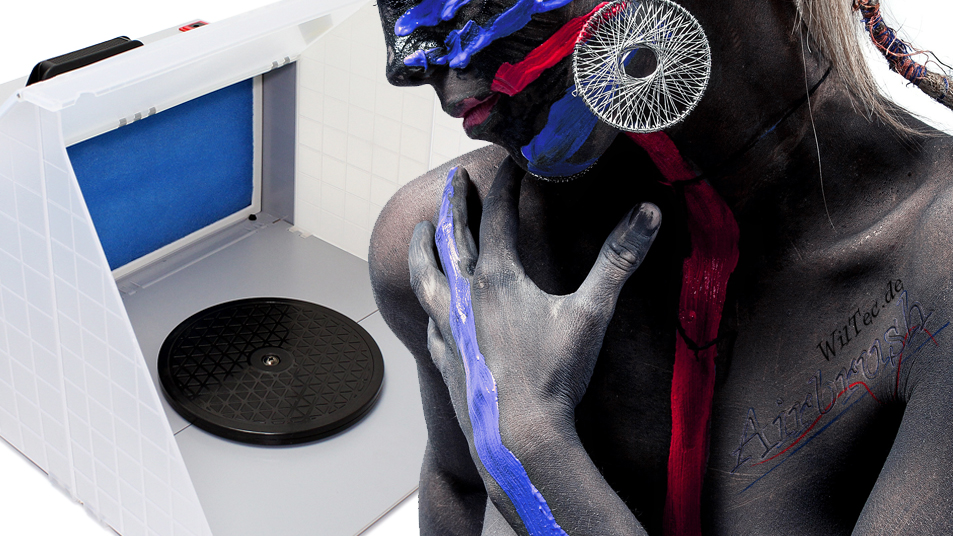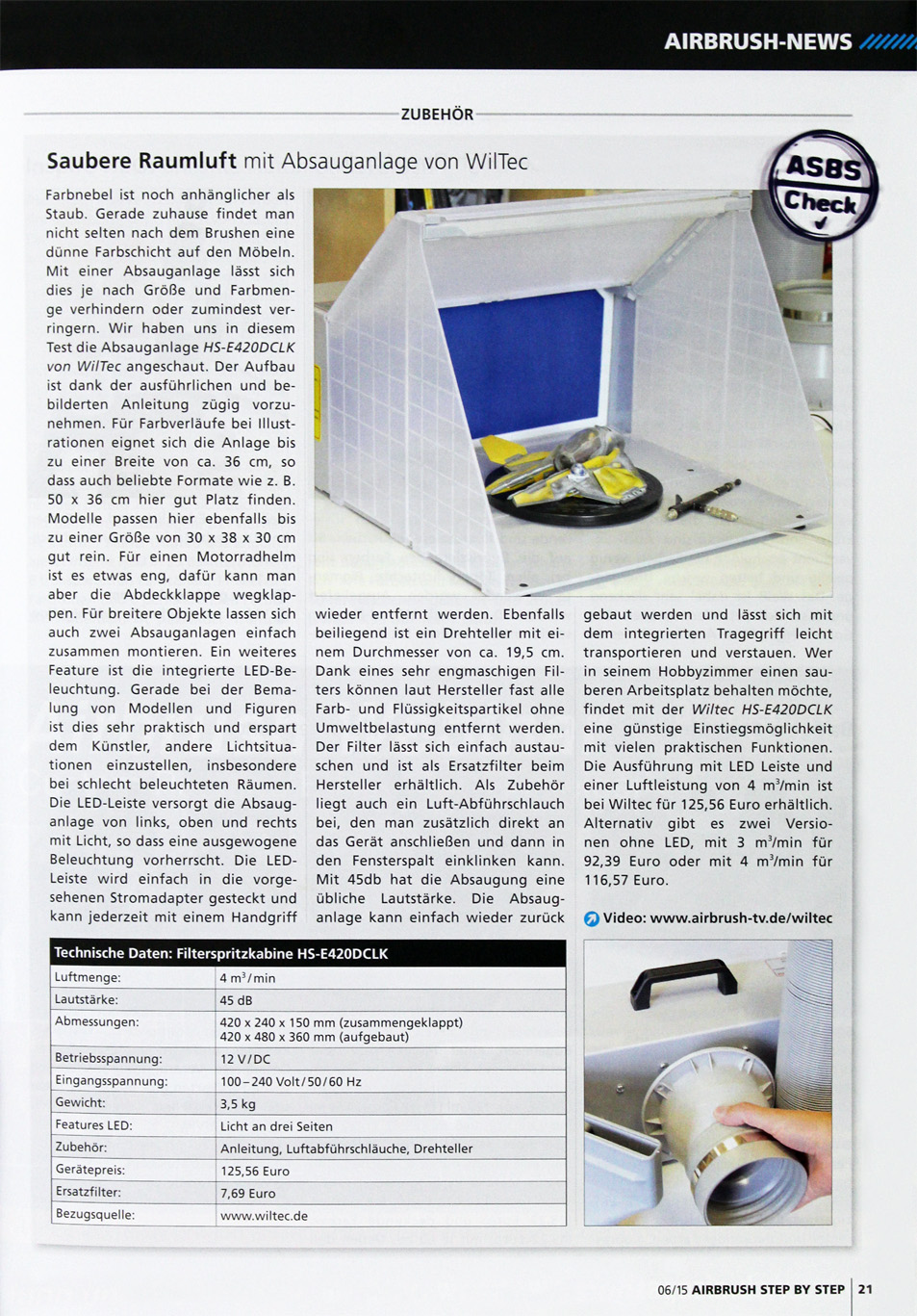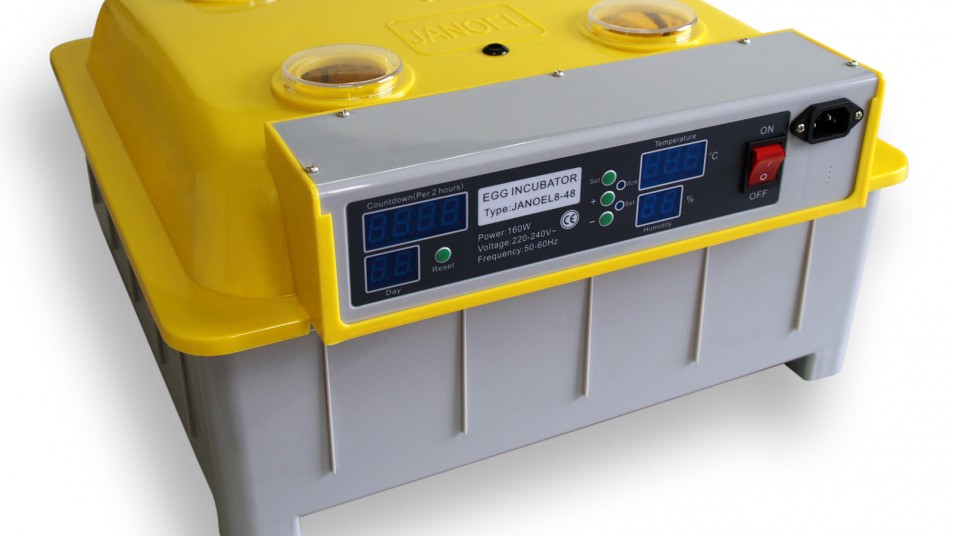Great success with small eggs
WilTec has launched a new branch on the market. Incubators for animal breeding, breeding machines for small and medium sized series, which require the intervention by hand, up to fully automatic machines. Fully automatic machines are able to incubate up to 96 eggs at the same time, the temperature as well as the humidity are automatically regulated. The eggs are turned fully automatically.
Take a look at the store “wiltec.de”: Breeding machines – Incubators
Incubator hygiene
Proper hygiene is essential to achieve good hatching results. Poor hygiene causes chicks to die in their first 10 days of life.
Only clean eggs should be used for incubation. Dirty eggs are potential carriers of diseases that thrive and multiply in the ideal heat and moisture conditions of the incubator. If you need to incubate dirty eggs, wash them first in warm water (44-49oC) that contains disinfectant at a rate recommended by the manufacturer (most household disinfectants are suitable), and dry the eggs quickly after washing using separate paper towels.
Do not soak eggs for longer than four minutes to avoid affecting fertility and do not soak eggs in cold water, as it encourages bacterial penetration through the eggshell.
Fumigating eggs immediately after collection also helps with hygiene. A suitable fumigant is formaldehyde gas, which is made by mixing 1 part (by weight) of potassium permanganate (Condy´s crystals) with 1.5 parts (by volume) of formalin (see Table 1 for the correct amounts for each application). Place the chemicals in a dish on the floor of the incubator. Place the Condy´s crystals into the dish first and then pour the formalin over it. Shut the incubator door quickly and vacate the room.
For proper fumigation, run the machine normally with the correct temperature and humidity. After 20 minutes, open the vents or the door and air the machine for a few minutes. Again, vacate the room.
Healthy stock
It is important that eggs from only a healthy flock are used for hatching, as some diseases can be transmitted through the egg. The egg-transmittable diseases to be most aware of are salmonella infections, fowl typhoid and Mycoplasma gallisepticum.
Eggs laid by birds infected with disease may fail to hatch. Of those that do hatch, some birds may die during brooding, and the survivors may act as carriers and infect healthy chicks.
Do not add eggs from unknown sources to make up numbers, as you risk infecting your flock.
Breeding stock nutrition
The egg provides a complete food store for proper embryo development except gaseous oxygen, which enters the egg through pores in the shell. Breeding stock must be fed a well-balanced diet to fully meet the embryos’ nutrient requirements.
The deficient nutrients are usually vitamins or minerals. A deficiency of these in the breeders’ diet may not show any ill effects in the breeders, though hatchability may be affected, which is why different categories are fed specific diets. Nutritional deficiencies, such as a lack of riboflavin, are the main causes of embryo mortality during the middle stage of incubation (i.e. between the 12th and 14th days).
Hens’ vitamin and mineral requirements for laying eggs are lower than those of breeders. The breeder’s diet should begin six to eight weeks before hatching eggs are required, with particular attention to vitamin A, D3, riboflavin, pantothenic acid, biotin, folic acid, vitamin B12 and the mineral manganese.
| Deficient nutrient |
Result |
| Riboflavin |
Leads to poor hatchability with a high incidence of malformed embryos, which are excessively moist |
| Pantothenic acid |
Lowers hatchability and causes a high incidence of apparently normal embryos to die over the last two or three days of incubation |
| Biotin, choline and manganese |
Leads to abnormal development of the embryo and a condition known as enlarged hock/slipped Achilles tendon |
| B12 |
Leads to a rapid decrease in hatchability and a progressively poorer survival of chicks that do hatch |
Age of breeding stock
If the male bird is active, not too large or overweight, and fertile, his age has little or no effect on hatchability or the vigour of the chicks. The older the cock bird, the fewer hens he can mate effectively without loss of fertility. Fertility and hatchability also decrease, as the hen’s egg production drops with age, and is highest during her first and second laying season.
Hatching eggs selection
It is important to consider the size, shape and shell texture when selecting eggs for hatching. Best results are obtained by setting eggs that are around the average egg weight for the type of poultry.
Since egg size is highly heritable, the rejection of small eggs will help to maintain good egg size in the progeny. Extra large or small eggs are a handicap in the incubator. The egg shape is hereditary, so continual use of badly shaped eggs perpetuates and increases this fault.
Only eggs with good shell texture should be used for hatching. Shell texture is not heritable; however, weak-shelled eggs may crack, enabling bacteria to enter or excessive moisture to be removed from the egg. Porous-shelled eggs increase the rate of moisture loss during storage and incubation. Hair cracks that are too small for the naked eye to detect can be found by placing a strong light behind the egg. Egg colour does not affect hatchability.
First Season Eggs
Any fertile egg will hatch in the right conditions but “best practice” is to only hatch hen eggs of 12 months and older, even 12 month old hen eggs can be smallish depending on when she hatched. If a chook is hatched in August, Sept Oct, it will produce hatchable eggs at a younger age than one hatched in January Feb Mar. They will have matured and got their pullet size eggs over and done with through winter, whereas a January hatched pullet is too young to have started laying before winter therefore their pullet eggs won’t start until Spring, BUT because they are older and stronger when they come into lay, their eggs get bigger quicker if that makes sense. Pullet eggs will produce small chicks and more often than not these will become smaller hens, who will in turn have smaller eggs who will have smaller chicks and so on.
In saying that the chicks seem to be just as healthy and if the eggs are a reasonable size I would just go for it, start adding meat bird crumble to their starter crumble at about 4 weeks old and that will give them a really good protein boost and they will grow better. Just don’t hatch any very petite eggs.
Collection and storage of hatching eggs
Embryonic development continues if fertile eggs are maintained above 20°C. Therefore, it is essential to collect eggs frequently and store them under cool conditions.
Eggs should be collected at least twice daily, and preferably three or four times. For best hatchability, eggs should be stored no longer than a week before setting.
The best temperature for storing hatching eggs is 10 to 16°C. Storage humidity is also important. Humidity below 70 per cent causes the eggs to lose excessive moisture. Below are the correct wet-bulb readings for a given humidity at the storage temperature. If you do not have a specific cool room, store the eggs in a cool, dry place. Eggs stored under conditions where the temperature and humidity vary tend to start and stop incubation, resulting in pre-incubation and lower hatchability.
| Dry bulb |
Wet-bulb reading |
| 60% relative humidity |
70% relative humidity |
80% relative humidity |
| °C |
°C |
°C |
°C |
| 10 |
6.8 |
7.4 |
8.2 |
| 11.1 |
7.6 |
8.3 |
9.3 |
| 12.2 |
8.4 |
9.4 |
10.5 |
| 13.3 |
9.6 |
10.6 |
11.4 |
| 14.3 |
10.7 |
11.5 |
12.1 |
| 15.3 |
11.5 |
12.2 |
13.3 |
Other factors affecting success
Rough or careless handling when transferring eggs to the hatching compartment or prolonged delays during transfer, resulting in chilling, may cause embryo deaths.
Excessive inbreeding of poultry may result in lethal or semi-lethal genes, which also cause mortality during incubation.
Consistent temperature
A hen’s normal body temperature varies between 40.5 and 41.7oC, depending on the bird and her degree of activity at the time. The optimum temperature at the centre of an incubated egg is approximately 37.8oC. When hatching under a broody hen, the upper surface of the egg may reach 39.2 to 39.4oC but the egg’s centre will not exceed 37.8°C.
In modern fan-forced incubators, the manufacturer’s recommended temperature setting is between 37.5 and 37.64oC. The lethal temperature for eggs is 39.4oC. The constant and rapid air movement in this type of incubator keeps the eggs’ temperature the same as the incubator’s.
An embryo’s heat production increases as incubation progresses. The temperature increase is greatest during the last two days due to embryo activity. Egg temperature rises up to 2oC above the incubator’s ambient air temperature, which is why the temperature is often lowered by up to 1oC.


